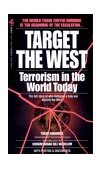|
| Home | About Kashmir Herald | |
Volume 4, No. 5 - November 2004 |
|
| Featured Article |
|
|
|
Central Asia: A New Field of Indo-Pak Rivalry Prof. K. N. Pandita
With the incursion of Soviet Union into Afghanistan in 1979, India began re-thinking her policy towards Central Asia. Pakistan had emerged a crucial entity in the shipment of huge American armament to the Afghan mujahideen.
Pakistan’s essential interest in extending full scale influence in Afghanistan was not only strategic but also economic. She wanted to begin extensive trade with Central Asia, in particular eyeing her enormous hydrocarbon reserves. Afghanistan was of great importance as it provided the only overland route.
In sponsoring and supporting the Taliban, Pakistan wanted to ensure the security of trade route from Kandahar to Heart and Mazari Sharif and then across the Oxus to Central Asia. It ha become insecure in a state of lawlessness. The Taliban promised that security and in fact did clash with the looters and waylaying brigands who had attacked an experimental caravan. The US was not averse to Pakistan’s move because the Chevaron oil giant of the US had been hobnobbing with Turkmenistan to agree to the plan of laying a gas pipeline from Daulatabad to Gawadar.
The Taliban representatives did attend a couple of meetings in Texas to give their approval to the laying of the pipeline across Afghan territory. But hard pressed by the war ravaged economy, each time they held meetings with the oil cartels, they tried to extract more and more benefits, mostly unreasonable from Chevron pint of view. Finally the deal fell through.
Perhaps the US would not have targeted the Taliban if they had not made a common cause with Al Qaeda. The fall of Taliban and the consequential military presence of the Americans, or to be precise the allied forces, in Afghanistan changed the entire political chemistry in the region.
Pakistan had to fold its wings. The concept of strategic depth westward had to be shelved. Pakistani military officers and other ranks providing logistical support to the Taliban had to be recalled, war supplies stopped and political support withdrawn.
With the installation of American sponsored regime in Afghanistan, India thought of reactivating her Central Asia policy. The time was ripe. The Americans, assessing the conditions obstructing liquidation of Osama lock, stock and barrel, and conscious of growing threat of Islamic fundamentalist terror following 9/11, stationed their troops in Uzbekistan, Kyrgyzstan and Tajikistan, thus bringing up the northern curve of her offensive strategy to be matched by her maritime strategic curve in the Persian Gulf.
India obtained a toehold in Afghanistan. Gradually she opened her embassy in Kabul and consulates in Jalalabad and Kandahar. Islamabad was left licking its wounds. In exasperation, it brought the onus of sectarian clashes and bomb blasts at various places in Pakistan to the doorsteps of Indian consulates in Kandahar and Jalalabad.
As tripartite negotiations of bringing Turkmen gas to Gawadar via Afghanistan progressed, Islamabad began to realize that it could become economically viable only when the pipeline terminated somewhere in India. She waited and threw signals to New Delhi. But New Delhi would risk agreeing to a pipeline with its security entirely dependent on the whims of Pakistani rulers. India began talking to Iran and the proposal of laying an under water pipeline from Bandar Abbas in Iran to Kandla on Indian west coast was mooted. Iran is too eager to see this important project finalized but the cost is forbidding. Iran has now begun to understand India’s unwillingness to accept the Pakistani offer of laying the overland pipeline through her territory.
For the time being, Pakistan is lying low in Central Asia. To her disappointment, many Central Asian Islamic radicals, particularly the members of Islamic Movement of Uzbekistan of Namangani/Yuldashev group have been captured by the Americans during their anti-Osama military operations in Southern Waziristan.
Islamabad has been cultivating Turkmenistan. Benazir Bhutto was the first Pakistani Prime Minister to pay an official visit to Ashgabat. During that visit the subject of laying a gas pipeline had been discussed and Pakistan had offered to support Turkmenistan in strengthening her economy. It is not known whether Pakistan has also promised military assistance to Turkmenistan by way of supply of weapons and training of Turkmen military officers in her defence academy. At least this much is known that Pakistan has found in Turkmenistan a customer of her military hardware.
But with the rising tension between Armenia and Azerbaijan, two trans-Caspian states of Central Asia, and Iran and Saudi Arabia offering their shake hand to Azerbaijan, Russia gravitated towards Armenia. When Pakistan began selling military hardware to Azerbaijan and Baku began taking a position in regard to her claims to the oil rich Caspian rim, Russia began making her presence felt in the region.
In the light of this development, India, for the first time took a bold initiative of making her presence felt in Tajikistan, the so-called under belly of the former Soviet Union. The strategic importance of Tajikistan was felt by India when the Northern Allies forces commanded by late Ahmad Shah Masud held the invading Taliban at bay. Being contiguous to Afghanistan, Tajikistan was the next target of radical Islamists in case Afghanistan fell to their onslaught. It is quite likely that the stationing of an Indian air force contingent at Ainy to the north of Dushanbe must have had the prior approval of the Russians and the Americans.
India’s small and symbolic military presence in Ainy but her large scale trade protocols with Uzbekistan give an idea of a change in the basics of India’s policy in Central Asia. India has offered very liberal trading conditions to the CARs and Uzbekistan has been able to take benefit from it. Thus in terms of security perceptions and trade and commerce interests, India has a good and enviable position in Central Asia today,
Pakistan made a couple of indiscreet moves in Central Asia and thus is faced with a backlash. In the first place, soon after the collapse of the Soviet Union, Pakistan vied with other neighbouring states, Iran, Saudi Arabia and Turkey in building her hegemonic influence in the area. The display of Islamic card under the dubious notion that Islam had been dealt a serious blow in Central Asia during the Communist rule was a big misunderstanding. Though Islamabad quickly realized that it had played a completely wrong card yet the self-inflicted damage has not been repaired even after a lapse of a decade or more.
Secondly, Pakistan tried to malign India in the eyes of the Central Asians, a majority of whom is of Sunni faith. This did not work because the Central Asians, besides valuing their age – old cultural ties with India, have always been highly appreciative of her democratic secular dispensation. To the younger generation of Central Asians, India remains a model of scientific and technological development that the developing Asiatic countries could emulate. Thus Pakistan’s negative policy in Central Asia became counter-productive.
The impact of Pakistan proliferating nuclear capability to the Saudis is also looked upon by the Central Asians as something unwanted. To their mind this is a subtle method of forcing Wahhabi ideology on the Muslims world over. Or at least it is to intimidate them. As against this they are convinced that India stands committed to peaceful use of nuclear technology.
Pakistan has leverage in terms of overland route from India to Central Asia. That is what the Indian policy planners understand. This is the reason that they have found the alternative in Bandar Abbas – Sarakhs route. The two towns have now been linked by a railway line in the construction of which India has made concrete contribution. India has concluded a number of trade agreements with all the four Central Asian states and Indo -- Central trade is developing fast.
Pakistan is waiting in the wings. She is keenly observing the progress in the stabilization of internal situation in Afghanistan. She is trying to develop good relations with Karzai government and would not like to give an offence. However the critical question is whether Pakistan will or will not extend covert support to the ethnic Pakhtoons of Afghanistan who inhabit the region on either side of the Durand Line. Can she take the risk with the intention of destabilizing Karzai government? It is hoped she will not. On the other hand New Delhi is playing her Central Asian card with considerable dexterity. She is providing humanitarian assistance to Karzai government, maintaining liaison with the Pukhtoons through the respectable Pukhtoon elite living as exiles in India, and at the same time she has strategic commitment with the leadership of Northern Alliance and with the Tajik government of Imomali Rahmanov. |
 |
 |
 |
|
|
Archives
| Privacy Policy |
Copyrights
|
Contact
Us | |
||